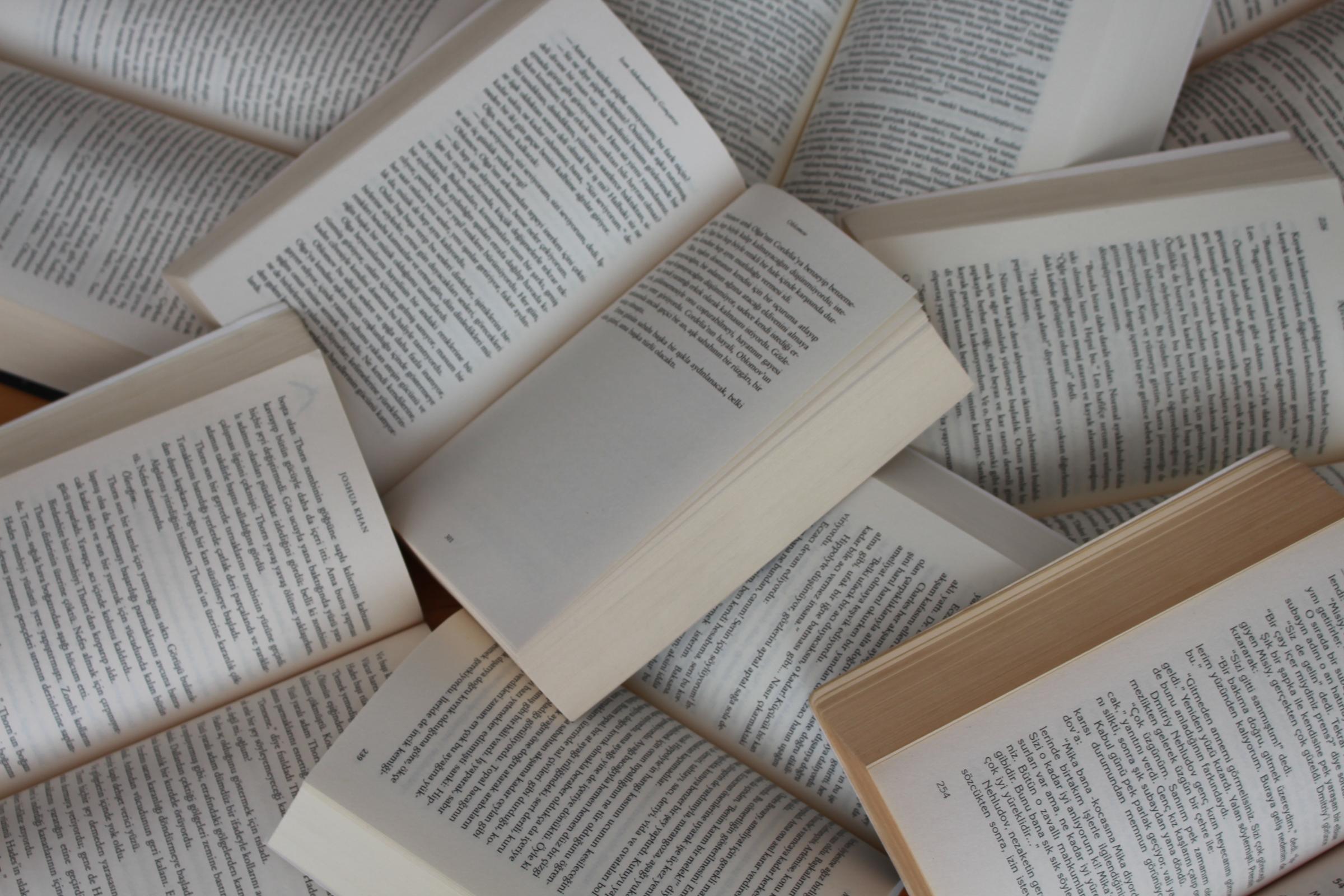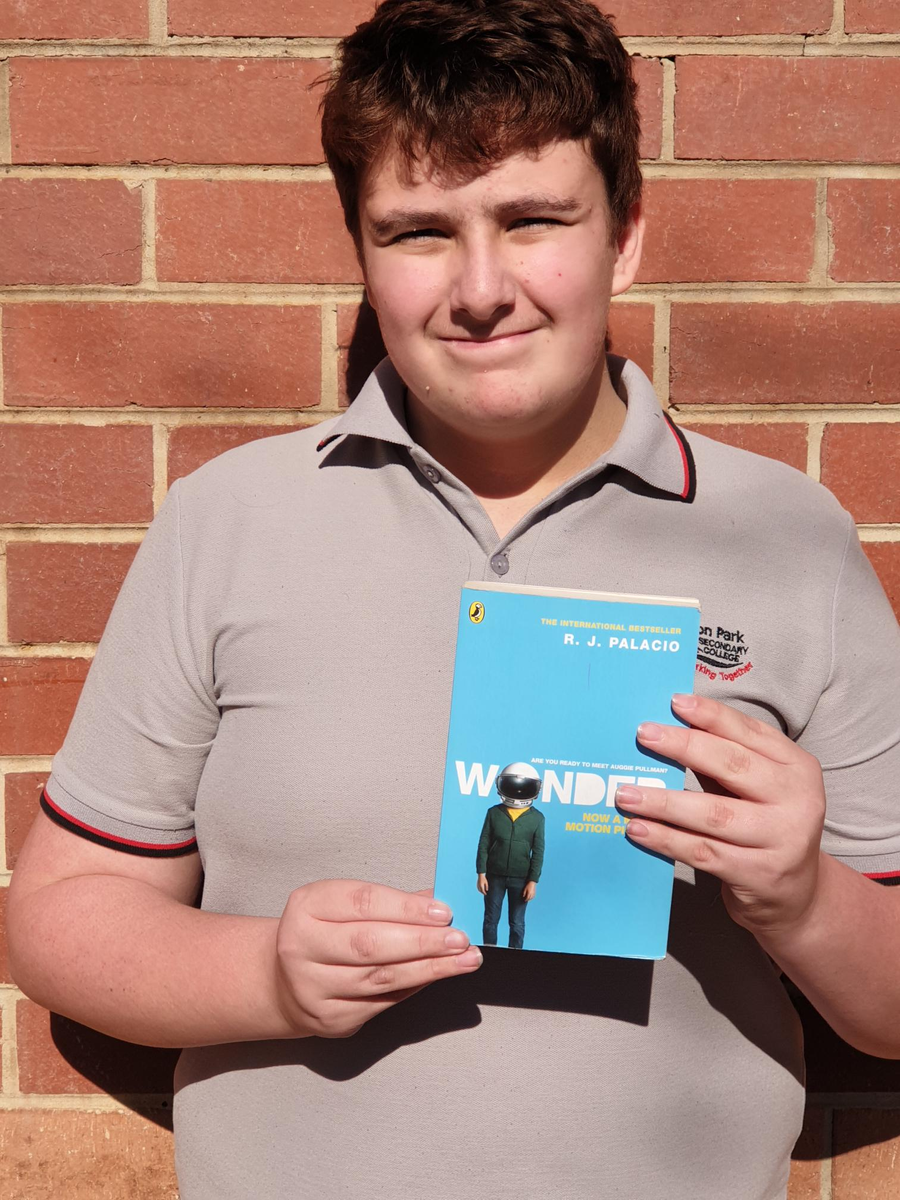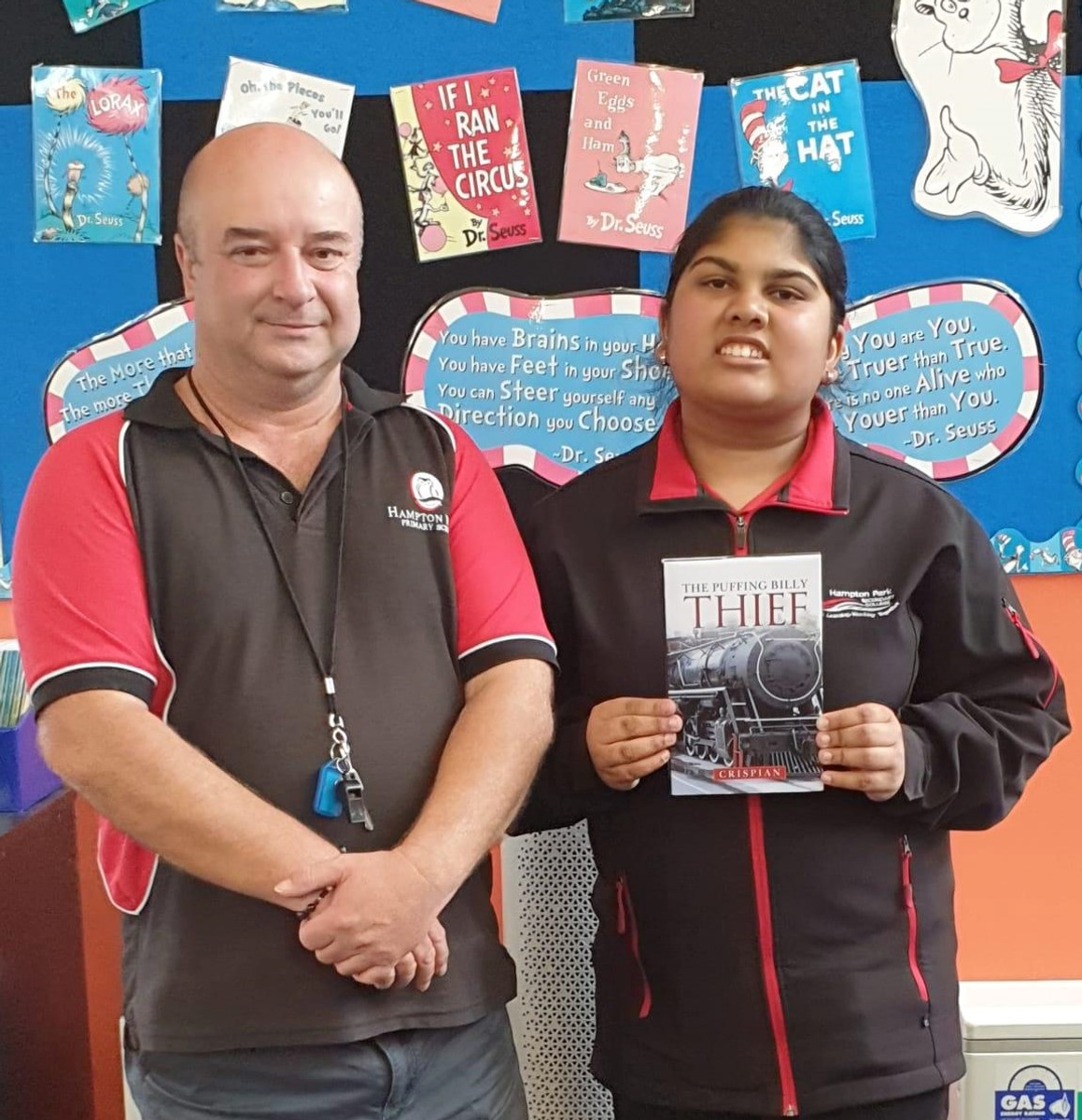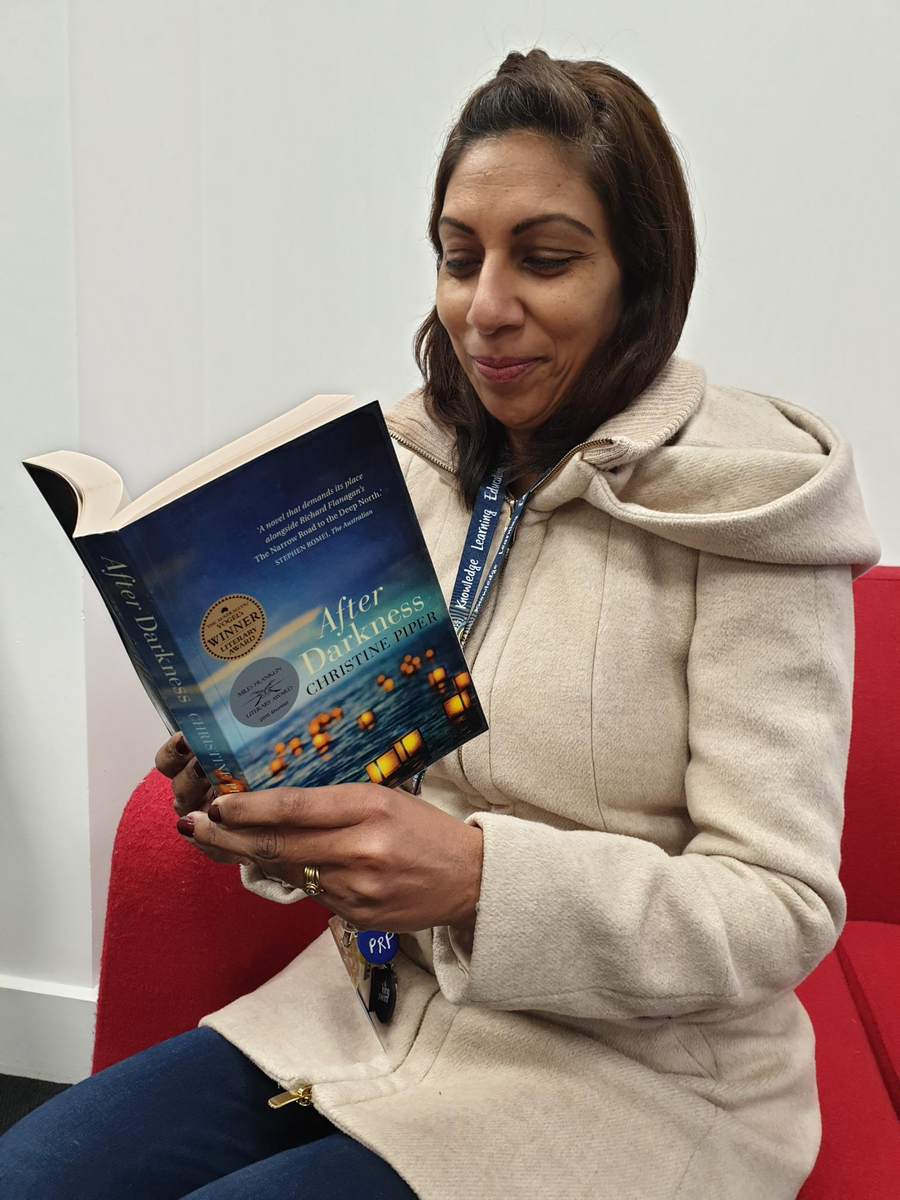Book Reviews

Book Review by Michael Hoare
‘Wonder’ by R.J. Palacio
The story named ‘Wonder’ is a book by R.J Palacio about a little boy named August Pullman who has issues fitting in with other kids because he had been born with a disability affecting his face. This had led to him being homeschooled by his mother. ‘Wonder’ is split up into many parts each focusing on a different character in the story. We learn about the struggles of August but also those around him like his sister.
Despite the fact he has a disability August still manages to find friends. The main plot of the story focuses on August Pullman’s struggles of going to a middle school and finding friends with his disability. The book reveals many hard moments. An example would be a point in the book where his friend Jack Will is seen talking with the people who bully Auggie where one of them says “If they were Auggie they shoot themselves.” This makes Auggie feel betrayed by his only friend. He later learns that Jack Will still wants to be friends with Auggie and is hurt by the things he said.
A passage I find interesting would be this:
If I found a magic lamp and I could have one wish, I would wish that I had a normal face that no one ever noticed at all. I would wish that I could walk down the street without people seeing me and then doing that look-away thing. Here’s what I think: the only reason I’m not ordinary is that no one else sees me that way. But I’m kind of used to how I look by now. I know how to pretend I don’t see the faces people make. We’ve all gotten pretty good at that sort of thing: me, Mom and Dad, Via. Actually, I take that back: Via’s not so good at it. She can get really annoyed when people do something rude. Like, for instance, one time in the playground some older kids made some noises. I don’t even know what the noises were exactly because I didn’t hear them myself, but Via heard and she just started yelling at the kids. That’s the way she is. I’m not that way.
This passage has August addressing how he wishes he could just walk outside without being stared at by strangers and if he could, he would change his face. However, most of his family have gotten used to it, except for his sister he writes. It shows his resilience and how he finds ways to work around how people feel about him.
‘Wonder’ is a masterpiece of a story that faces the struggle Auggie Pullman went through and his story of how he managed to successfully graduate from middle school with more friends than he ever thought was possible. The resilience and strength that Auggie shows throughout the book was magnificent and the book deserved to be a Best Seller when it was published in 2012.
In conclusion ‘Wonder’ is a fantastic book that I feel most people should know as it shows lessons about resilience and friendship and how you can achieve anything with resilience and strength. This proves why ‘Wonder’ was not only a best seller but also a great movie!
Book Review by Denise Gibbs
‘The Puffing Billy Thief’ by Crispian
Declan opened the small wooden gate and he and his twelve-year-old sister Annabella walked through. It was Boxing Day, the day after Christmas and the lunchtime sun shone down brightly through the tall gum trees. They had both had an enjoyable Christmas Day with their parents. Annabella wore a short summer dress and her long blonde braided ponytail swung from side to side as she followed her brother, who was a year older, up the garden path. The gate clicked shut behind them. Tall hedges rose on either side of them, and their rubber-soled runners made no sound on the slate path.
The Puffing Billy Thief is the second book in Crispian’s current book series. This book takes place in Emerald. The book is about brother and sister duo Declan and Annabella’s second school holiday adventure with their friends Lachlan and Jazz. The mystery that they come across in this book is that some people have had their things stolen while on the Puffing Billy. It’s up to them to find out who’s been stealing people’s things. Throughout the book, they travel from place to place to find the culprit.
He and Annabella watched through the doorway as the small group of agitated passengers converged on Bill in the booking office. From where he stood, Declan couldn’t hear what the people were complaining about, but they were obviously quite angry. One old man actually shook his fist under Bill’s nose. The conductors were there too.
I chose this book as I found it really interesting based on the title and blurb and the title reminded me of all the times I’ve been to Emerald and have seen the Puffing Billy train. I would definitely recommend this book for those who enjoy reading mystery books.
They went in to see Bill who was still visibly upset.
‘What’s up Bill?’ Declan asked. ‘What were those people so angry about?’
Bill put his hand to his head. ‘Oh, it seems as if there was a thief on board and quite a few wallets and bags went missing from one of the third-class carriages. I’ve never heard of anything like this happening on the train.’
‘That’s terrible,’ exclaimed the children. ‘What did the thief do with them?’
‘No one Knows’
Students who went to Hampton Park Primary School might remember Crispian as Mr. Deacon, the teacher in charge of the chess team, or have seen him around the school before. He is a fantastic teacher and talented author. I would highly recommend that you check out this book and his other books including Mystery on The Tambo River and LOCKDOWN: Mystery of the Missing Dogs if you like fun mystery books.
Book Review by Jordan Hayward
Night’ by Elie Wiesel
The book “Night” by Elie Wiesel is a very fascinating book, it tells the reader of the experience Elie went through when he was a Jewish teenager living under the Nazi regime in 1944. Moishe the beadle, his teacher is one of the first to be sent to the camps, he changes before everyone from a teacher of the Kabbalah to a sad, fearful man who tells everyone of the horrors of the Gestapo. His warnings are ignored but later, Elie is taken to Auschwitz-Birkenau, he recounts horrific tales of SS soldiers using Jewish babies as target practice and being forced to work and being beaten.
One of the most powerful aspects of "Night" lies in its portrayal of the atrocities committed during the Holocaust. Wiesel spares no detail when describing the dehumanization, suffering, and loss he and the people around him had to go through. Through his words, readers witness the cruelty and inhumanity that happened under Hitler’s command. Elie Wiesel’s ability to display the emotions, fears, and hopes he underwent as a young boy caught during one of the most terrifying events in world history makes this memoir deeply compelling. Readers can tell just how much weight this book carries as it is capturing the essence of the Holocaust's horrors effectively.
There are several parts within this book where Elie truly encapsulates the emotions he went through and helps the reader to visualise his experience, but the one that struck me the most was when he had received 25 lashings for laughing at an officer, how he describes himself going in and out of consciousness, attempting to stand when the officer tells him to, but remaining on the crate as he is unable to listen, how he describes wanting to stand up and listen to the officer but also, because of his dry throat, being unable to tell the officer that he can’t is a horrifying experience, and brings the reader an eerie sense of dismay.
However, the most memorable and most quoted lines in the book are these:
NEVER SHALL I FORGET that night, the first night in camp, that turned my life into one long night seven times sealed.
Never shall I forget that smoke.
Never shall I forget the small faces of the children whose bodies I saw transformed into smoke under a silent sky.
Never shall I forget those flames that consumed my faith forever.
Never shall I forget the nocturnal silence that deprived me for all eternity of the desire to live.
Never shall I forget those moments that murdered my God and my soul and turned my dreams to ashes.
Never shall I forget those things, even were I condemned to live as long as God Himself.
Never.
Book Review by Prunelle Prahaladh
‘After Darkness’ by Christine Piper
The train began to slow as we approached the outskirts of a town. Farmland gave way to wide, dusty streets. The river coursed ahead of us, just out of reach. We pulled into a train station, stopping with a jolt at the platform. ‘Murray Bridge’ the sign read. A woman and a small girl were sitting on a bench on the platform facing our carriage. The girl was about three—my niece’s age when I’d last seen her—fair-skinned and chubby, with brown curls pulled into bunches on either side of her head. Seeing us, her eyes flashed. She tugged her mother’s arm and pointed at us. The woman stared straight ahead. We were at the station less than a minute when the whistle blew. As the train lurched forward, the woman grabbed her daughter’s hand and dragged her towards our carriage. She came so close I could see a mole above her lip. She spat. A glob landed on the window in front of my face. ‘Bloody Japs!’ she said, shaking her fist.
In one’s life, individuals may become burdened with their desire to uphold what is morally right yet may be influenced by their personal struggles. In Christine Piper’s historical novel ‘After Darkness’, the consuming conflicts of the protagonist, Doctor Tomokazu Ibaraki, engulf his life. Whilst struggling internally, the protagonist must also endure the trials and tribulations that were presented to him because of World War II, current at the time. Piper demonstrates the way in which individuals’ relationships can be negatively impacted by one’s ability to adhere to the truth. Further, the author draws heavily on the notion of duty and power, as it can take precedence over the truth. In relation, ‘After Darkness’ illustrates the power of friendship and the overwhelming desire for atonement, as characters become struck by a sense of motivation to heal the mistakes of their past.
‘After Darkness’ mentions a vast number of events that lead into three intertwined narrative strands that were occurring during the time periods of 1934 to 1942, finally drawing conclusions in the year 1989. The novel has a non-linear structure, jumping between Ibaraki’s past in Tokyo in 1934, his research with Unit 731 in Broome, to his internment at Loveday Camp in Australia during the year 1942. The author's way of conducting the story in such a fashion is an effective way to engage the reader by heightening dramatic tension and suspense. This calls upon the reader to draw parts of Ibaraki’s life together to create a sense of the protagonist's past. In this way, Piper also sheds light on the atrocities of World War II, particularly the political affiliations of Japan and Australia respectively.
Piper strategically intertwines the gruesome tests of Unit 731 and the Epidemic Prevention Laboratory, as they experimented with new forms of warcraft. Such testing left Ibaraki with deep emotional trauma and turmoil, as this becomes prevalent in the entirety of the novel. Characters such as Sister Bernice and Kayoko Sasaki test the protagonist’s sense of self-worth whilst acting as love interests. Additionally, Piper utilises a range of minor characters to illuminate the moral dilemmas faced by Ibaraki such as Stan Suzuki, Johnny Chang, and the Japanese Nationalist Yamada and Lieutenant Colonel Ishii.
Christine Piper additionally exposes the different aspects of society through the influence of guilt. Taking place during World War 2, the author initially depicts the impact that the corrupted Japanese Government has on the protagonist, catalysing his deteriorating mental state. As a result, the protagonist feels remorseful, unleashing his frustration on those who grow most close ultimately forcing those he cares about to distance themselves. However, building upon this idea, Piper suggests that guilt can spark realization and prompt change within a character ultimately instilling good.
Book Review by Brad Andrews
‘Princess Bitchface Syndrome 2.0’ by Michael Carr-Gregg
"Princess Bitchface Syndrome 2.0" by Michael Carr-Gregg is a revised and updated edition of his popular book that offers a practical guide for parents of teenage girls. In this book, Carr-Gregg explores the challenges that come with raising teenage girls, particularly those who display what he calls "Princess Bitchface Syndrome" - a term he uses to describe girls who are moody, dramatic, and difficult to handle. Although I am a parent of two young boys, I found this book to be a valuable read, as it provided me with an alternative perspective to parenting and helped me as a teacher, to better understand some of the struggles that the everyday teenage girl faces.
Michael Carr-Greg's approach is straightforward and relatable, drawing from his years of experience as a clinical psychologist and parenting expert. He offers concrete strategies for dealing with the behaviours associated with this syndrome, such as managing anger and emotions, building self-esteem, and setting boundaries. His advice is practical and realistic, emphasizing the importance of open communication and mutual respect between parents and their teenage daughters.
What sets this book apart from other parenting guides is the author's ability to connect with his audience. He writes with humour and empathy, sharing personal stories and anecdotes that make the book engaging and enjoyable to read. He also incorporates the latest research in psychology and neuroscience to provide a comprehensive understanding of teenage development and behaviour.
Overall, "Princess Bitchface Syndrome 2.0" is a valuable resource for parents who are struggling to navigate the complex world of raising teenage girls. It provides practical tools and advice for managing the challenges that come with this stage of life, while also emphasizing the importance of building strong relationships with our children. Highly recommended for any parent of a teenage girl.
Book Review by Geoff Shinkfield
‘Where Song Began’ by Tim Low
As someone who has taken up bird photography in the last three years, I have become interested in everything about Australian birds. They are fascinating to observe, listen to, and, of course, photograph out in the magnificent Australian Bush. I have read a lot about all the species I have photographed in my numerous bird books, but this book is something different - a book about the evolution of songbirds in Australia and how they populated the rest of the world.
Tim Low, the author of Where Song Began is a biologist and author. His radical theory that “more than half the world’s birds, including songbirds, parrots, pigeons, and even the dodo – can be traced back to Australia” is the thesis of this book. His evidence is certainly compelling as he puts forward biological and ecological arguments that are backed up by recent DNA studies into Australia’s birds compared to others around the world. Low points out that most of the previous studies into the evolution of birds had a predictable colonial bias towards the Northern Hemisphere with many biologists assuming birds moved from Europe into the rest of the world. Low comprehensively turns that idea on its head.
Low makes the reader consider how amazingly different our birdlife is from that in other continents quoting recent studies:
For example, attacks by Australian magpies are accepted as a normal part of suburban life, when by global standards they are exceptional…The magpie is one of Australia’s two or three most popular birds, despite statistics showing that magpies stab the eyes of one or two people each year, often causing permanent damage…Canadian biologist David Bird has nominated the Australian magpie as likely to be, for suburbanites, the most serious avian menace in the world.
David Low focuses on the fact that Australia’s birds have ‘despotic aggressiveness over sub-continental scales’ – to put it simply, our birds are super aggressive and territorially competitive on a scale much higher than found overseas. Low explains that the vast majority of our birds are honeyeaters, obsessed with a largely sugar-based diet that causes species of birds to fight with each other and between each other for food sources, something not seen in other continents, due to the make-up of their flora and fauna. It also makes our birds the noisiest, something tourists to Australia immediately notice!
Far more nectar is available to birds in Australia than on other continents – enough to fight over, and harsh cries assert possession. Australia’s eucalypts and paperbarks are the only bird-pollinated trees on earth to form vast forests, and wattlebirds and lorikeets are important pollinators of their flowers…In the Northern Hemisphere, north of the tropics, all the main trees – oaks, beeches, elms, conifers, and the like – are pollinated by wind. Insects pollinate the shrubs and smaller trees.
Where Song Began features chapters on most regions and species from parrots and cockatoos of the forests to the wading birds of the rivers and seashores. Low provides interesting insights into migratory birds, invading species, and our unique birds like the cassowary and the emu. Importantly, he examines the evolution of bird song, and he links it to the extraordinary lyrebirds of Australia’s rainforests. Low reveals that lyrebirds are ‘living fossils’, the most primitive surviving songbirds. If you have seen one in the wild and listened to its extraordinary mimicry of other birds, then it is not hard to agree that it is the most amazing songbird on Earth. It is very strange looking as well – it looks like an ancient bird!
David Low’s research and that of a few other biologists have concluded that all songbirds in the world evolved from an ancient Australian bird, fossils of which have recently been discovered in Queensland, which pre-date other birds by 20 million years. A close living descendant of that original songbird is the lyrebird and further down the evolutionary line are all of Australia’s other songbirds. Based on DNA studies it is now clear that our songbirds colonised other continents thousands of years ago and that they then evolved into the different songbird species that live across the world today.
There is so much to learn about the evolution of songbirds in Australia and this book by David Low has certainly ruffled a few feathers among scientists. Thankfully, those who were once biased towards a Northern Hemisphere evolution are now accepting that Australia is ‘where song began’ so when you wander outside and hear a cacophony of deafening but beautiful bird songs, think how lucky we are! Be proud of our beautiful songbirds!






